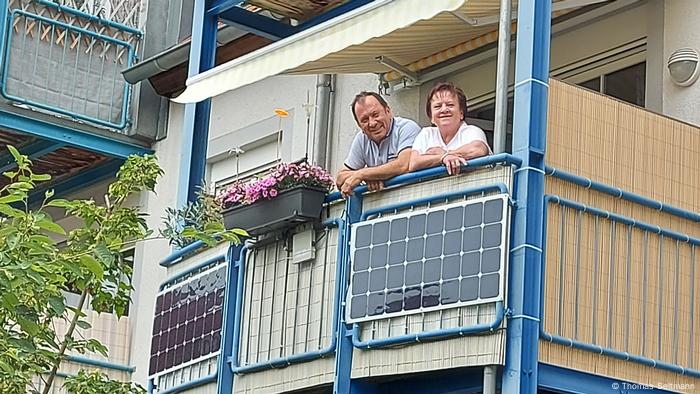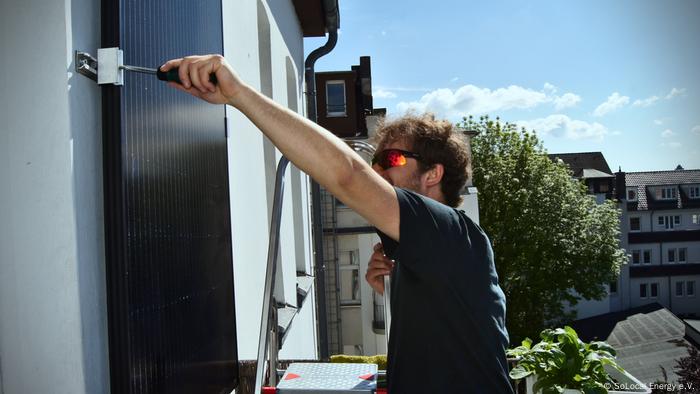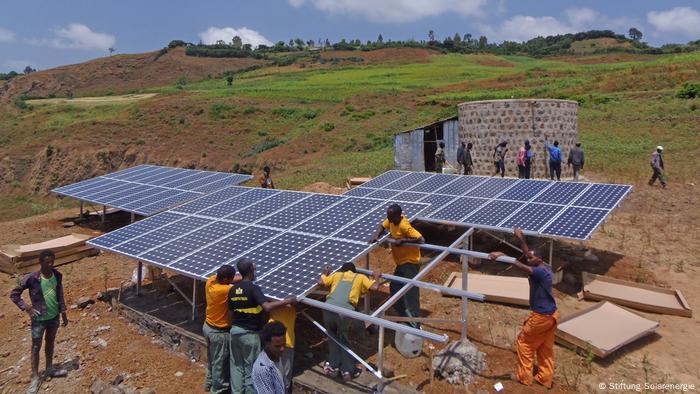How to generate your own solar energy
You can find small, self-made solar power panels on walls and balconies, roofs and terraces all over the world. Here’s a look at what kinds of systems are out there — and how to build them, keeping in mind costs.
1. Plugged into the grid: Mini systems for your home (Plug-In Solar)
Ever more people are meeting their electricity needs by purchasing mini solar panel systems, known as DIY Plug-In Solar Kits. The small photovoltaic systems come with 1 – 1o modules and have a power capacity of up to 3.5kw. That’s enough to meet up to most of the energy needs of one household, for example providing electricity for the fridge, washing machine, dishwasher or computer.
What is unique about small panel systems is that they can be plugged into the grid, using a Fused Connection Unit. They can go on your tiled roof metal roof, wooden roof, flat roof, or in your garden, or yard, and are expandable in the future.
“There are already several hundreds of thousands of these types of systems in use in Germany and its neighbouring countries, including the UK, where Plug-In Solar Kits are very popular. The devices are basically very safe, so far they’re not known to have caused any kind of damage,” says Thomas Seltmann, a photovoltaic expert at the Consumer Association for the western German state of North Rhine-Westphalia.
And there is a lot of interest. “We are at the beginning for a boom of plug-in solar devices,” says Seltmann.
2. ‘Island’ solar systems
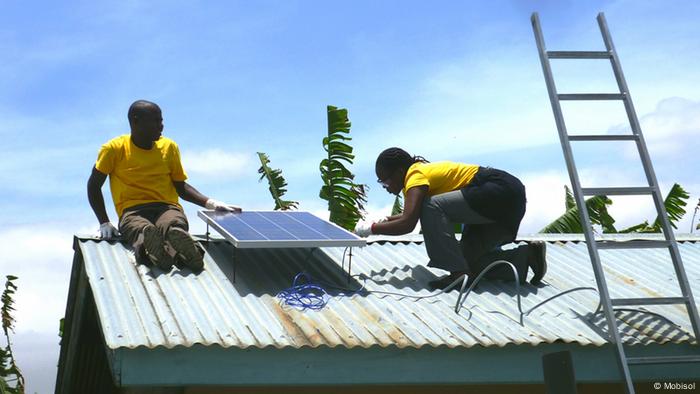 An ‘island’ solar system far away from the grid, in Rwanda — this home system can power lights, TV and radio
An ‘island’ solar system far away from the grid, in Rwanda — this home system can power lights, TV and radio
In 2010, around 2 billion people lacked electricity in many regions of the world because they didn’t have access to an electricity grid. Today, that number has dropped by 1.3 billion. The reason: It’s easy to generate electricity anywhere these days thanks to what are known as island solar systems. Equipped with a solar module and a battery, it’s an easy and very affordable solution.
These small solar home systems include a tiny 4-watt module with a battery and an efficient LED lamp generating enough light to do homework at night.
A slightly bigger island solar system that comes with a 50-watt module could power and additional several lights along with a television. And one that comes with a 250-watt module could even keep a refrigerator running.
Powering something bigger, such as an electric car, would require a 2,000-watt system, or roughly 10 square meters of modules. With that amount of electricity, a car could drive up to 16,000 kilometers (9,941 miles).
3. Solar power to go
Solar motion detectors for lights, solar lamps and solar plant-watering systems are becoming increasingly popular in people’s homes; while campers have discovered mobile mini solar panel systems.
Such systems are comprised of a solar module that can be easily folded up, as well as an inverter with a battery. These mobile power systems come in all different shapes and sizes for different needs, from tiny panels the size of a wallet that let you charge your cell phone, to very powerful systems with a capacity of 160 watts that let you charge your bike batteries, as well as power your laptop and fridge inside of a camper van. Many people buy them from specialized online retailers.
After your trip, you can still use them at home. The solar module can be easily placed on a window sill, where it could charge a phone. Or a bigger system could even serve as a backup power source for the fridge if the power goes out.
4. How much does solar power cost?
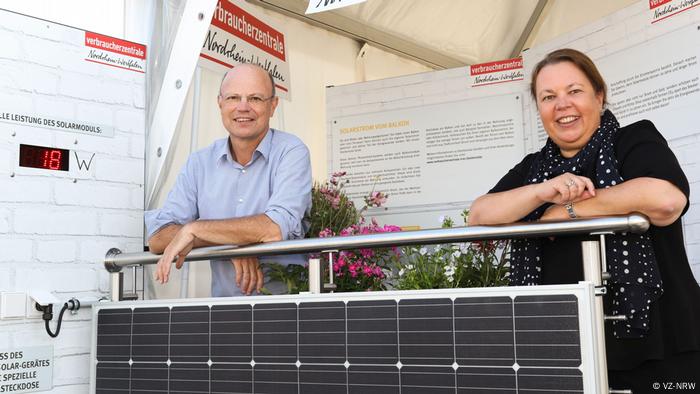 Consumer advocates and politicians promote plug-in solar panels, calling them a win-win for tenants and the climate
Consumer advocates and politicians promote plug-in solar panels, calling them a win-win for tenants and the climate
The price of mini solar panel systems depends on the performance of the module and battery. Other cost-decisive factors are quality, appearance and functionality.
Prices for good quality, mini solar home systems with a small battery and an economical lamp start at around €30 ($35), while island solar systems that can power a TV and fridge would cost several hundred euros. Mobile solar power systems for camping, which come with special panels that can be folded to fit into your backpack, have the same functionality but cost a bit more.
Plug-in solar Kits generally don’t have a battery and can be directly integrated into the grid. They cost from around £500 in Europe. According to the Consumer Association, plug-in devices in Germany pay for themselves after roughly six to nine years.
In low-sunlight countries like the UK, electricity produced by solar power costs on average between 10 and 12 pence per kilowatt hour (kWh). In more sunny regions, such as southern Europe, Africa, Latin America, California and many parts of Asia, this is less than 7 pence. Electricity from the grid is two to five times more expensive.
5. Are mini solar power plants good for the environment?
Mini solar panel power systems lower electricity costs and help protect the climate. In fact, according to the German Association for Solar Energy, an additional 1,000 to 2,000 megawatts of electricity could be generated by mini solar power modules in Germany alone. That’s how much electricity a coal power plant produces, which is much more harmful for the environment.
Experts say they also have another advantage for the climate.
“Many people so far don’t really have any inkling of how much electricity they use, and don’t have any experience with solar energy and battery storage,” says Krisztina Andre, who works at Bündnis Bürgerenergie, a German association that promotes renewable energy.
According to Andre, people who have their own solar power modules are able to monitor their own energy use, learning how to save energy costs and doing something good for the planet at the same time.
“It’s also fun,” says David Breuer from Yuma, an online shop that sells plug-in solar devices.
Andre is convinced that another boost for home solar modules could come from the rise of e-cars, as their batteries can be used more generally as energy storage.
“Electric cars have large batteries, and their electricity could easily be put to good use elsewhere: for meeting your own energy needs at home, as well as in the neighborhood through the public grid.”
Original Article: DW.COM

